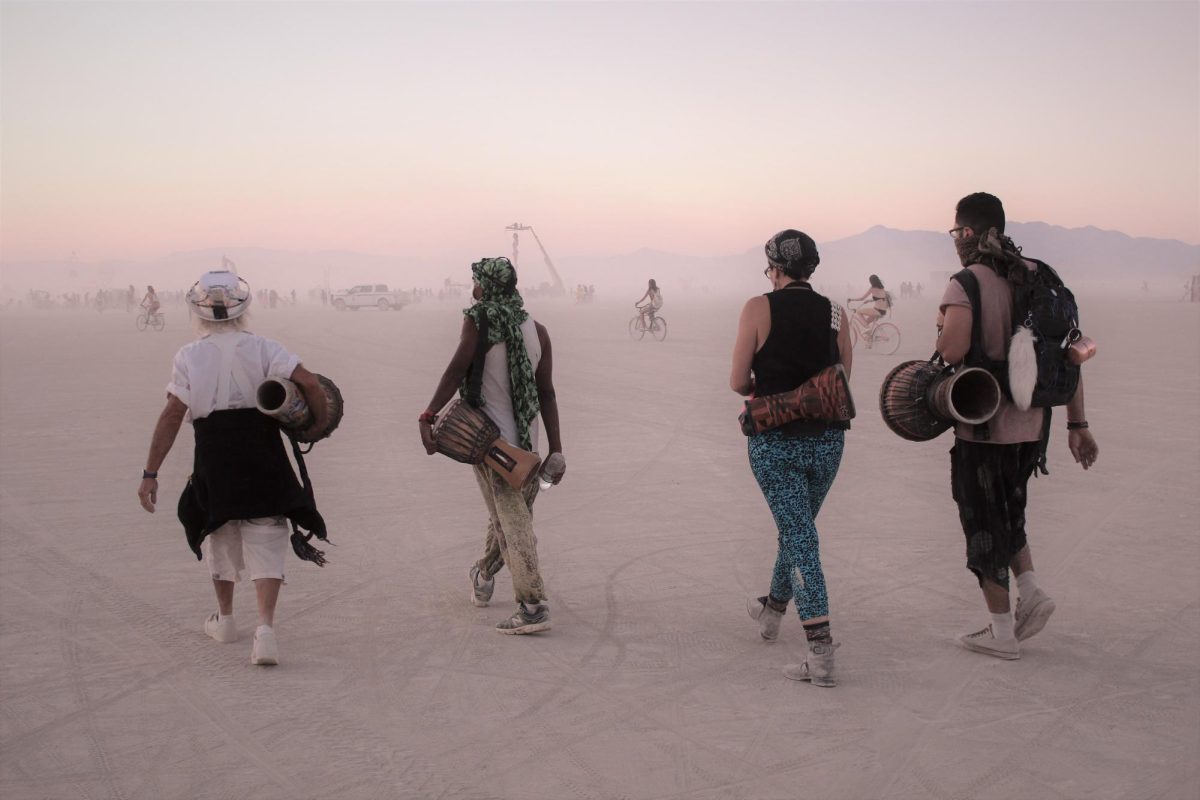Attendees of this year’s Burning Man festival found themselves at the mercy of Mother Nature when more than half an inch of rain turned the campgrounds into a muddy nightmare.
More than 70,000 people made their annual trek to Black Rock City, NV to connect with their friends and their inner selves while igniting yet another wooden effigy. Since the festival’s origination in 1986, its reputation has continued to find its way into conversations as people wonder what makes Burning Man so special.
What sets it apart from other mainstream festivals is the various principles Burning Man is founded on. In 2004 Larry Harvey, co-founder of Burning Man, created ten such principles based on inclusion, decommodification and leaving no trace to name a few. The festival is aimed at getting away from normal everyday life and allowing individuals to truly be themselves, whether it be through art installations, gifts, music or newfound relationships.
However, it seems that some of these principles have lost their importance as Burning Man has grown in size.
For starters, the amount of trash left behind this year by attendants was worse than in previous installments. Single-use plastics along with other types of trash became buried and baked into the Playa, making it incredibly hard for the clean-up team to leave things as they were. There was a major lack of effort by attendees to clean up their mess this year, in part due to the exhaustion from being trapped for three days with limited food and water. Playa foot, chemical burning from long-term exposure of bare skin to the Playa, impacted attendees as well, providing even less motivation for them to go back and spend hours digging up trash in the dirt.
Additionally, any vehicles such as bikes or cars have left scarring on the Playa which could remain for long periods of time. This isn’t good news for the ecosystem as the scarring affects how the Playa absorbs water, possibly altering the habitat for fairy shrimp and water fleas.
The lack of care from the community opens up the conversation about Burning Man’s target audience and who actually ends up going.
Statistics showed that of the 75,000 people who went more than half had an income of $100,000 and 16 percent had an income of over $300,000, a far cry from the original hippies who first attended during the festival’s inception. This trend of wealthy individuals challenges the idea that Burning Man is a place for everyone, rather it’s grown to favor the wealthy in a tradition based on universal acceptance. These people not only publicize and advertise Burning Man far beyond its intended audience but end up bringing in an audience who values pictures and status rather than self-growth and experiences.
So this begs the question, is Burning Man just another mainstream festival?
There’s no doubt that this year tested everyone both physically and mentally, but despite these hardships, people still found ways to enjoy their time and will continue to attend the festival next year. Burning Man has grown exponentially bigger than its predecessors and will only continue to bring in more people who wish to experience the magic barred behind an expensive admission ticket.
Though growth can be positive, this means that if old principles are not cared for then, slowly, the atmosphere will continue to evolve into a bragging right rather than a treasured memory. Perhaps the mud is a way of nature revealing the true personalities of those who seek enlightenment in the Playa; perhaps it’s simply another crazy weather event that so many other events this year have faced.
It’s the attendee’s job to uphold Burning Man’s key principles and community to stop it from becoming just another mainstream media party. Without them, Burning Man may lose the charm its creators worked so hard to capture. Even worse, the very place Burning Man takes place could become permanently disfigured if clean-up by attendees is not prioritized.


